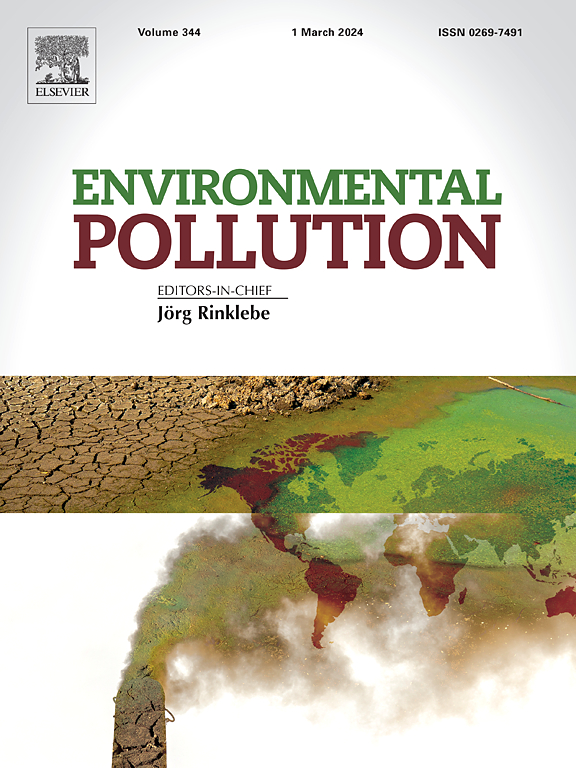Outdoor residential air pollution exposure and the development of brain volumes across childhood: A longitudinal study
IF 7.6
2区 环境科学与生态学
Q1 ENVIRONMENTAL SCIENCES
引用次数: 0
Abstract
Emerging evidence suggests that air pollution exposure is associated with child's brain morphology, but the relationship between air pollution and longitudinal changes in the development of brain volumes has yet to be investigated. We studied the association of exposure to air pollution in pregnancy and childhood with the change of brain volumes from childhood into adolescence, using repeated assessments of brain volumes. We used data from 4243 children of a large Dutch population-based birth cohort. Exposure to 14 air pollutants during pregnancy and childhood was estimated using land-use regression models. We obtained structural brain MRI data at 3 timepoints, resulting in 6059 useable scans of white matter, cortical grey matter, cerebellum, and 7 subcortical volumes. For 1191 participants we had data on both last two timepoints. We conducted single-pollutant analyses for each air pollutant and brain volume, using linear mixed models adjusted for life-style and socioeconomic status variables. Then we performed multi-pollutant analyses with the least absolute shrinkage and selection operator for mixed models. Air pollution exposure was not associated with changes in white matter, cortical grey matter, and cerebellar volumes. Higher exposure to copper and particulate matter with aerodynamic diameter <2.5 μm (PM2.5) during pregnancy was associated with a smaller hippocampal volume at the first neuroimaging assessment, followed by faster growth of hippocampal volume (e.g. 25.1 mm3 increase of hippocampal volume [95 % CI 8.6; 41.7] per 5 ng/m3 increase in copper exposure per year of age). Results were comparable when restricting the analyses to children with complete data for the last two timepoints. Exposure to copper and PM2.5 during pregnancy was related with a smaller hippocampal volume in mid childhood, followed by catch-up growth. Plasticity of the hippocampus might mitigate adverse effects of air pollution early in life.


求助全文
约1分钟内获得全文
求助全文
来源期刊

Environmental Pollution
环境科学-环境科学
CiteScore
16.00
自引率
6.70%
发文量
2082
审稿时长
2.9 months
期刊介绍:
Environmental Pollution is an international peer-reviewed journal that publishes high-quality research papers and review articles covering all aspects of environmental pollution and its impacts on ecosystems and human health.
Subject areas include, but are not limited to:
• Sources and occurrences of pollutants that are clearly defined and measured in environmental compartments, food and food-related items, and human bodies;
• Interlinks between contaminant exposure and biological, ecological, and human health effects, including those of climate change;
• Contaminants of emerging concerns (including but not limited to antibiotic resistant microorganisms or genes, microplastics/nanoplastics, electronic wastes, light, and noise) and/or their biological, ecological, or human health effects;
• Laboratory and field studies on the remediation/mitigation of environmental pollution via new techniques and with clear links to biological, ecological, or human health effects;
• Modeling of pollution processes, patterns, or trends that is of clear environmental and/or human health interest;
• New techniques that measure and examine environmental occurrences, transport, behavior, and effects of pollutants within the environment or the laboratory, provided that they can be clearly used to address problems within regional or global environmental compartments.
 求助内容:
求助内容: 应助结果提醒方式:
应助结果提醒方式:


